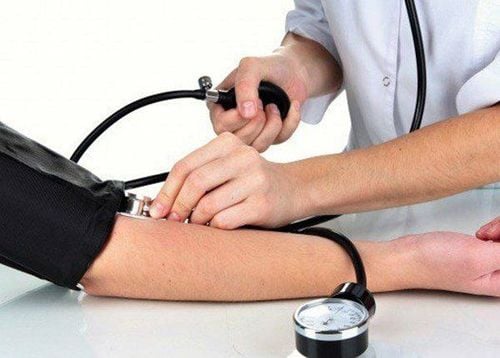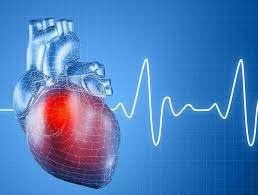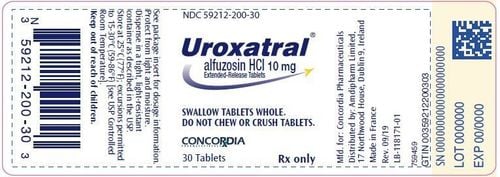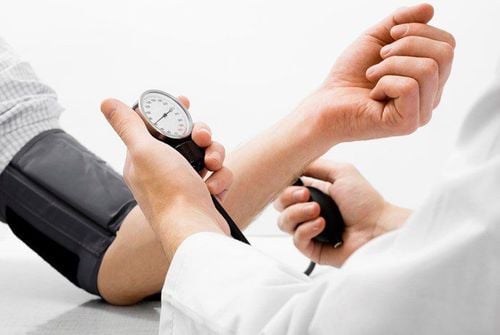This is an automatically translated article.
This article was professionally consulted by Doctor General Internal Medicine Doctor - Department of Medical Examination & Internal Medicine - Vinmec Hai Phong International General Hospital.
Blood pressure is one of the simplest parameters to assess the state of human health. High or low blood pressure will make us tired, uncomfortable and even lead to many dangerous complications. Understanding the two components of blood pressure readings, systolic and diastolic, will help people understand the basics of their health and know what to do to maintain a good blood pressure level.
1. What is systolic and diastolic blood pressure?
When measuring blood pressure, especially with electronic devices, we often see two readings: the maximum blood pressure - also known as the systolic blood pressure, and the minimum blood pressure - also known as the systolic blood pressure. Truong. However, not everyone understands what these blood pressure readings mean.
Systolic blood pressure is the force of blood against the arteries when the heart contracts. This number is always of more interest, because it shows the heart's ability to pump blood to the organs.
Diastolic pressure is the force of blood against the artery walls when the heart is dilated. Unlike systolic blood pressure, this number is often overlooked, because it only reflects the elasticity of the vessel wall, which is difficult to change.
The difference in systolic and diastolic blood pressure keeps a certain difference to create perfusion pressure for organs. However, this difference should never be equal to or less than 20 mmHg. If below this number, the doctor will consider this as a case of clamped blood pressure and will conduct emergency treatment.
Trắc nghiệm: Huyết áp của bạn có đang thực sự tốt?
Huyết áp cao hay thấp đều ảnh hưởng đến tình trạng sức khỏe con người. Để biết tình trạng huyết áp của bạn có thực sự tốt không, hãy làm bài trắc nghiệm sau đây để đánh giá.2. What blood pressure reading is normal?
Systolic and diastolic blood pressure levels are especially important for the proper functioning of vital organs such as the heart, brain and kidneys, as well as for general body health. So systolic blood pressure How much is good and what is good diastolic pressure? According to the World Health Organization (WHO), blood pressure is considered normal when:
Systolic blood pressure ranges from 90 to 140 mmHg Diastolic blood pressure ranges dynamic range from 60 to 90 mmHg Low blood pressure when systolic blood pressure is < 85 mmHg and/or diastolic blood pressure < 60 mmHg. Doctors will diagnose high blood pressure when systolic blood pressure is 140 mmHg or higher and /or diastolic blood pressure of 90 mmHg or higher.

In adult adults, high blood pressure is a sign of essential hypertension. This rate accounts for the majority in the community with more than 90% of the general population whose cause is unknown. The remaining cases are secondary hypertension, that is, with an identifiable cause, requiring a thorough treatment of the cause, then the blood pressure will return to normal.
This problem is completely different from low blood pressure. The body always has many different mechanisms to help regulate the stable perfusion pressure for the organs. If the blood pressure is low, this indicates an abnormality or disease in the body, which needs early identification and timely intervention.
3. Note when monitoring blood pressure

The only way to know what your blood pressure readings are is to measure your blood pressure. The device used to measure blood pressure is called a sphygmomanometer.
Hospital sphygmomanometers work on a mechanical principle and are intended for use by trained medical personnel to measure blood pressure. At home, an electronic blood pressure monitor placed on the upper arm or wrist is often used mainly because of its simplicity and ease of use and the blood pressure readings, along with the heart rate, are clearly displayed on the screen of the device. .
However, before taking your own blood pressure measurement at home, it is important to understand that our blood pressure does not always stay the same or keep the same number but will change according to activity, emotions or our state of health at that moment. Just a small activity such as changing position, posture, drinking coffee or smoking, being emotional... will also increase blood pressure.
Therefore, to get accurate blood pressure measurement results to conclude whether blood pressure is abnormal or not, you must base on blood pressure readings of many days, many different times in a day. At the same time, only measure blood pressure after resting for at least 15 minutes, in a quiet environment, free of anxiety and stress, and absolutely do not use coffee or tobacco.
In addition, we need to get in the habit of keeping a diary of our measured blood pressure readings, both systolic blood pressure, diastolic blood pressure and heart rate. In case the indicators are outside the normal limits, it is advisable to visit a medical facility to be redefined by the doctor and plan long-term treatment, to prevent unfortunate consequences later.
Currently, there is a Holter blood pressure method to help users monitor blood pressure in a simple, convenient and effective way. This method is being applied at Vinmec Hai Phong International General Hospital.
Please dial HOTLINE for more information or register for an appointment HERE. Download MyVinmec app to make appointments faster and to manage your bookings easily.













